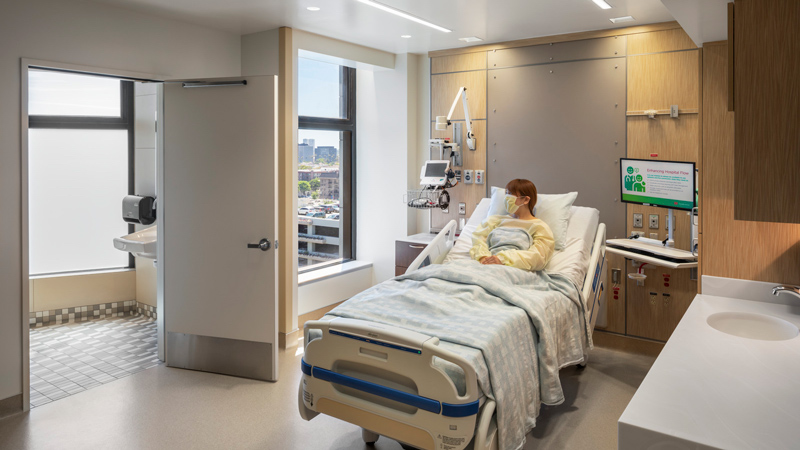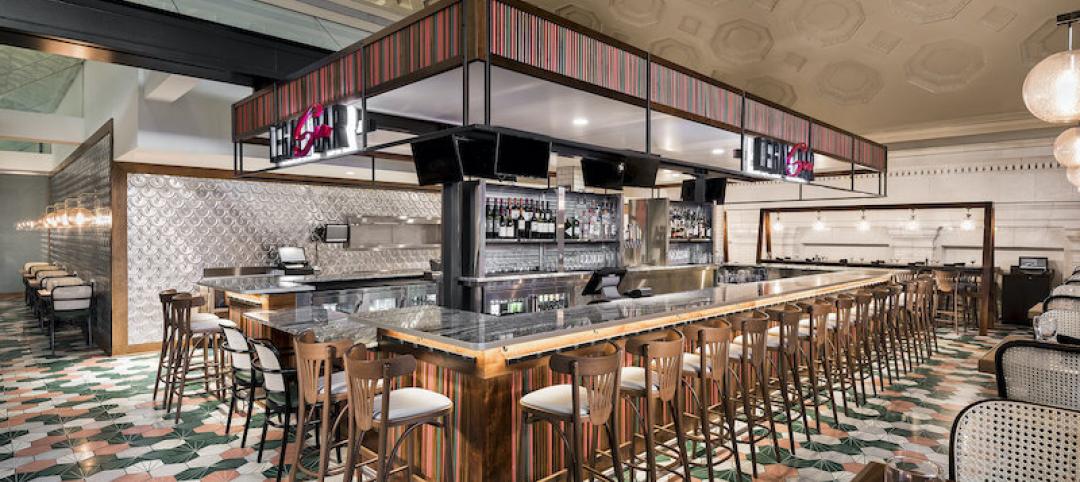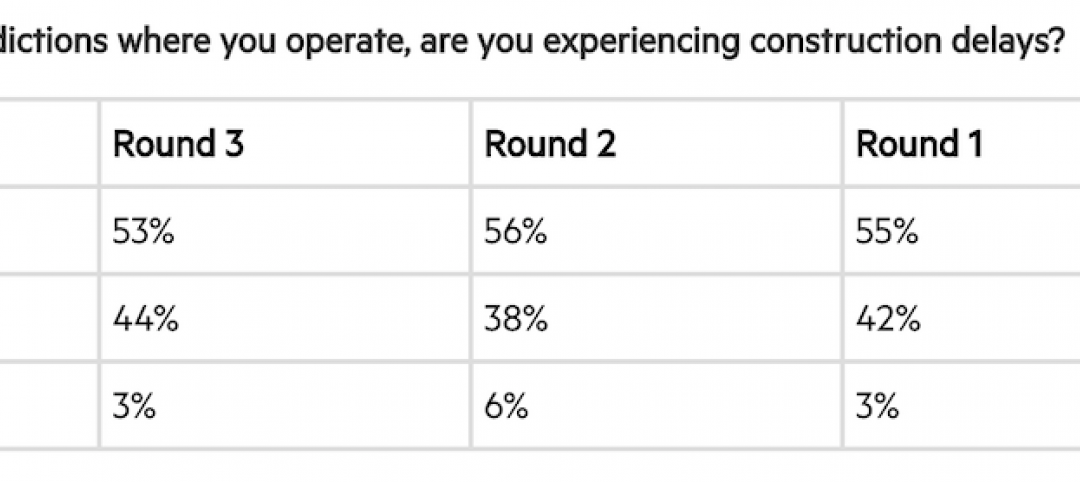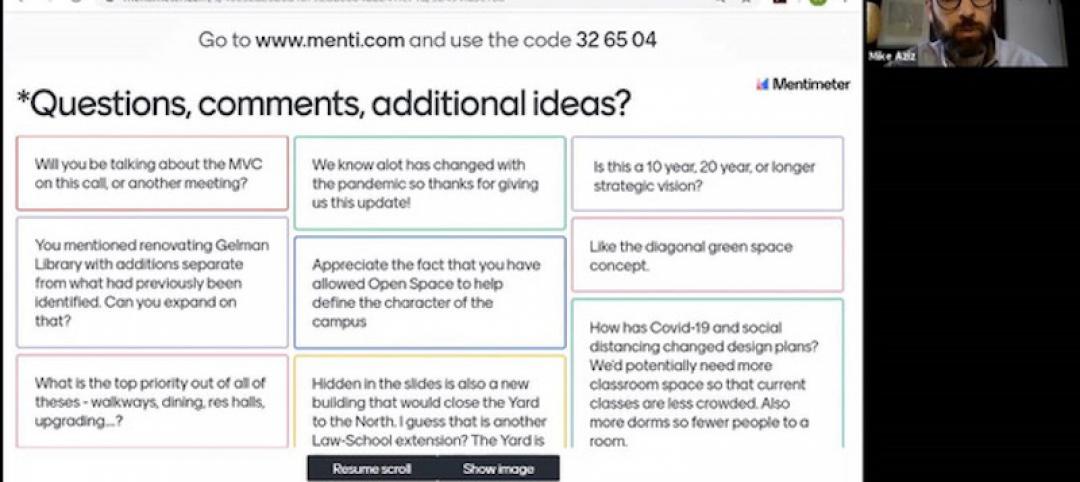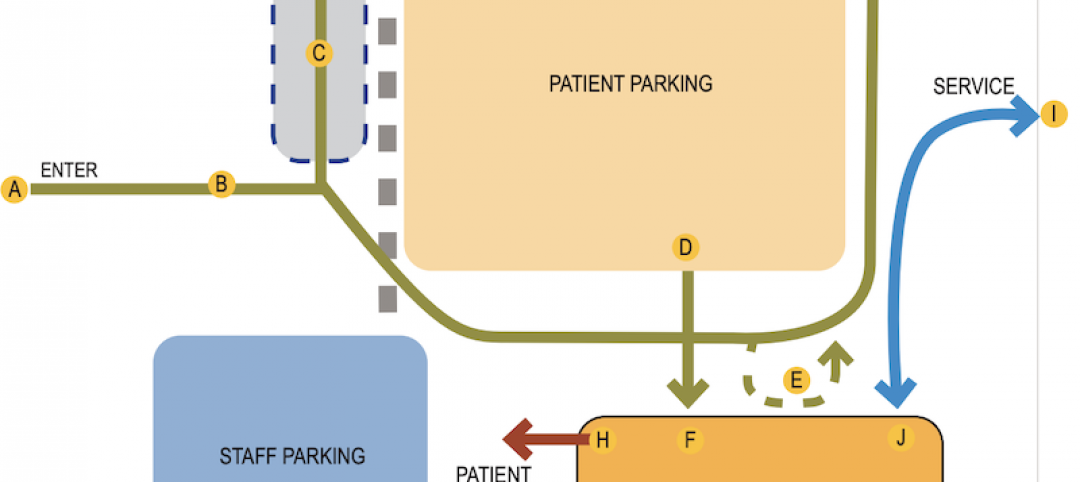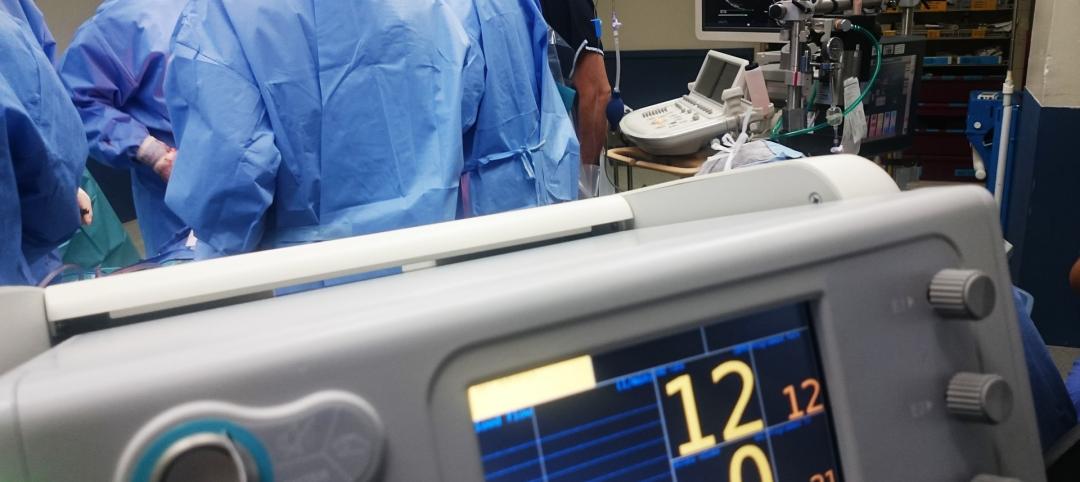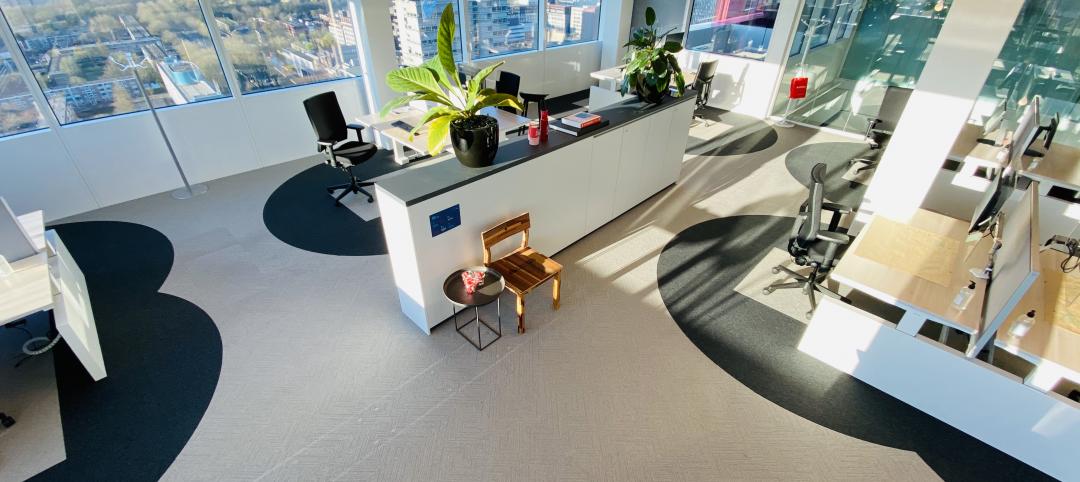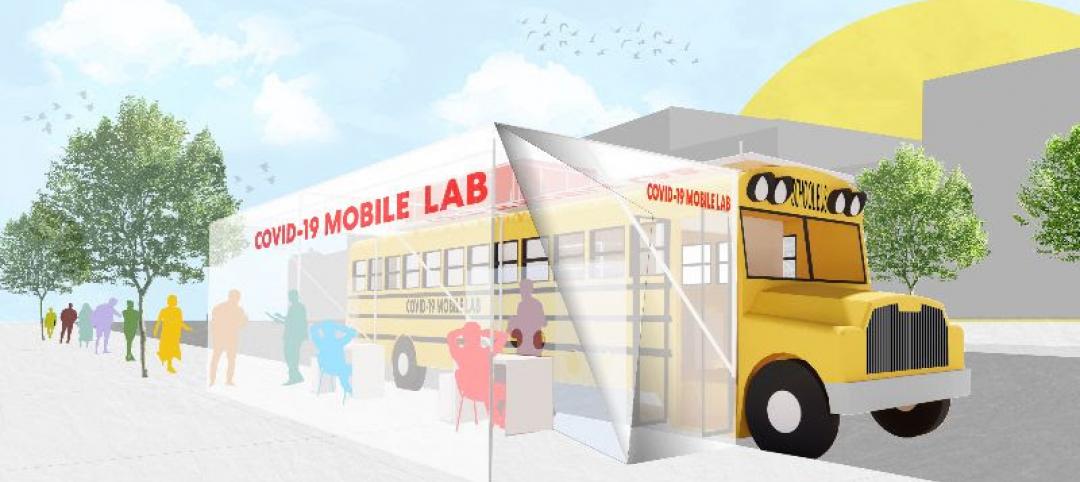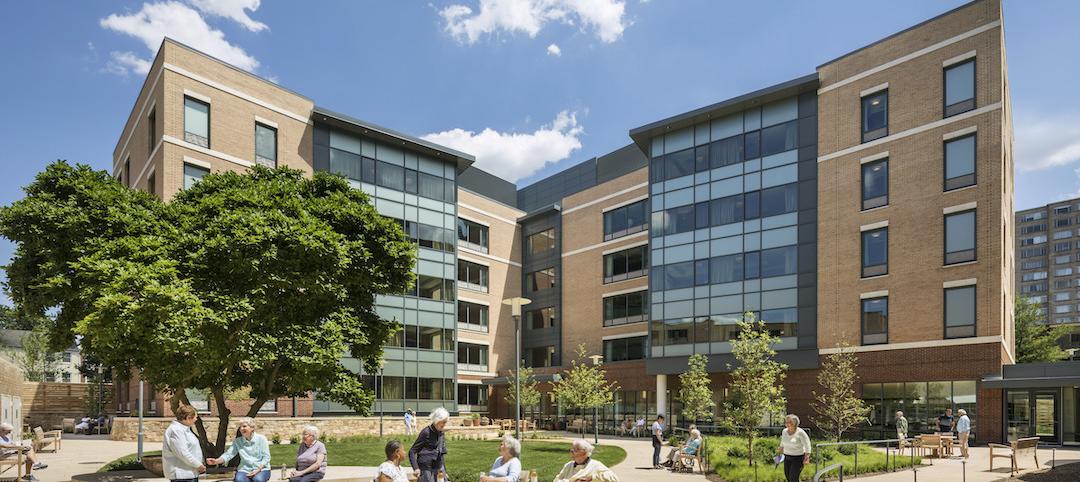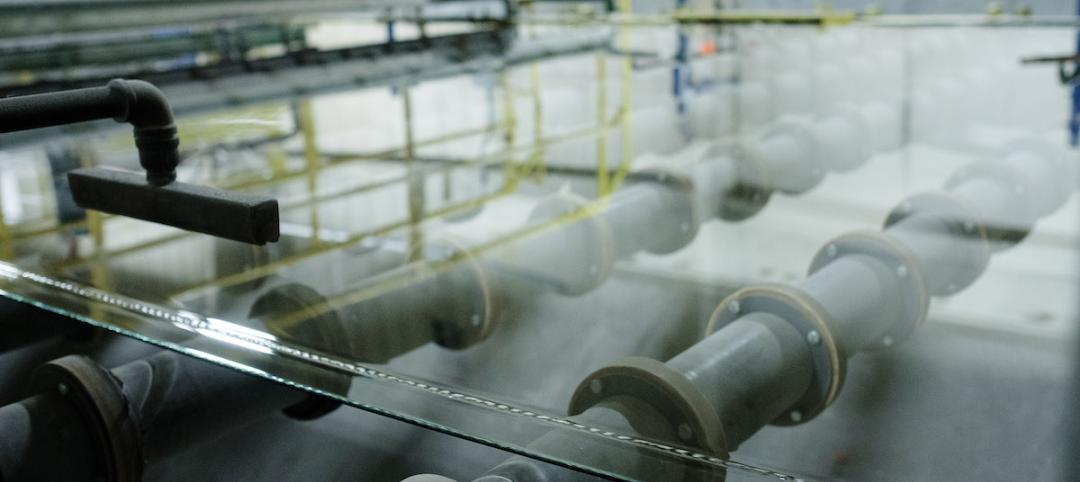Hospitals across the U.S. are already heavily burdened during flu season, with some operating at 110% capacity during its peak. COVID-19 adds stress to an already taxed system, threatening bed shortages and staffing issues.
Coronavirus patients also bring the risk of infection for healthcare workers and patients with other serious ailments when they enter a hospital. Meanwhile, only the most acutely ill COVID-19 patients need hospitalization. (Mild cases are encouraged to self-isolate in their residence.)
We have seen mortality rates from COVID-19 spike when health systems become exhausted, such as in Milan and Wuhan. As U.S. healthcare administrators consider outside-the-box solutions to expanding capacity, here are some thoughts to consider from a design perspective.
Look at hotels
Freeing up beds for the most acute patients is critical as COVID-19 spreads. As more patient hit the emergency department looking for care, difficult decisions will need to be made about who stays and who goes home. Severely acute patients without the virus will still need ICU beds. Some COVID-19 patients will require acute care, while many more will need to be quarantined.
Hotels are well situated to transform quickly into pop-up quarantines, and they have an economic incentive to do so as bookings have temporarily dried up. Several features make hotels easy to convert. They are made of private, individual rooms with dedicated toilets and HVAC. Their facilities already offer food service, cleaning services, waste removal and laundry. They are secure and many are located near existing hospitals.
The LEO A DALY healthcare team has already begun working with some developers on plans to retrofit hotels as COVID-19 quarantines. Minimal modifications to the rooms will be required. Nurse stations will be added to each floor. Reception desks will become patient check-in areas; retail areas will become pop-up pharmacies; offices will become labs. Exhaust fans added to roof ducts will create negative pressure rooms. Et voila – a pop-up isolation facility.
Add anterooms to existing isolation units
Major construction projects within operational hospitals are unlikely to begin during the current epidemic, and many counties have shut down all construction sites as a social distancing measure. Still, in a pinch, a relatively small intervention could transform any existing patient room floor into an isolation ICU.
Our healthcare teams have discussed surgically adding anterooms to the entrances of non-ICU hospital wings, creating an air lock that would isolate airborne pathogens within the wing. Patients within the unit would still potentially be infectious to each other, and staff would have to observe strict PPE protocols, but the adjacent hospital areas would be free from contamination and able to continue serving non-COVID-19 patients.
Leverage disused or underutilized facilities
With many ambulatory surgery centers cancelling elective procedures, there is an opportunity to convert them temporarily into acute COVID-19 treatment centers. Although they do not have the same containment capabilities as an ICU, they are set up to deliver round-the-clock medical care in an isolated environment.
Right now, we have not seen the level of cooperation among the independent owners of ambulatory centers and the larger health systems that handle the bulk of acute care. Collaboration would be necessary in order to leverage these facilities to fight COVID-19. In the absence of a singular, national healthcare system in the U.S., this is unlikely. However, something like an Executive Order could be used to mandate cooperation.
Social distancing and shutdowns of college campuses are now prevalent, making dormitories basically empty. These could be used for quarantine, for isolation (with HVAC changes), or to house otherwise healthy hospital patients that can’t quite go home. Most modern student housing is now built with en suite toilets, which would be an important amenity for patients. Leveraging student housing would increase the capacity of the whole healthcare system.
Many more underutilized facility types could be used for surge capacity. Low-occupancy post-acute care facilities and empty nursing homes could be a fit for quarantine of asymptomatic patients.
These are just a few ideas for responding to the shortage of acute care beds that experts anticipate as COVID-19 grows. Any of them will require healthcare administrators, lawmakers, developers and others to think outside the box and embrace innovative solutions. Code requirements may also need to be relaxed for interim measures. With all states under a State of Emergency, Governors would have the ability to enact interim measures allowing for more rapid deployment.
At this unprecedented time of crisis, design thinking and collaboration will be some of our strongest tools in the fight against infectious disease.
Related Stories
Coronavirus | May 27, 2020
Clean is the new Green as U.S. hospitality sector inches closer to reopening
Three design firms share their takes on what will make customers more comfortable about returning.
Coronavirus | May 26, 2020
Multifamily developers report mounting delays in permitting and starts due to coronavirus pandemic
More than half (53%) of multifamily developer respondents reported construction delays in the jurisdictions where they operate, according to the third edition of the National Multifamily Housing Council (NMHC) COVID-19 Construction Survey.
Coronavirus | May 26, 2020
9 tips for mastering virtual public meetings during the COVID-19 pandemic
Mike Aziz, AIA, presents 9 tips for mastering virtual public meetings during the COVID-19 pandemic.
Coronavirus | May 22, 2020
Designing a health facility for the next pandemic
Planning with intent is the key to readiness, states Eppstein Uhen Architects, the guide’s author.
Coronavirus | May 22, 2020
COVID-19: Healthcare designers look to the future of medical facilities in light of coronavirus pandemic
The American College of Healthcare Architects (ACHA) has released the key findings of a survey of its members revealing their insights on the future of healthcare architecture and the role of design in the context of the COVID-19 healthcare crisis.
Coronavirus | May 18, 2020
Will empty hotels provide an answer for affordable housing shortage?
A Los Angeles-based startup sees the Midwest as most fertile for adaptive reuse.
Coronavirus | May 18, 2020
Infection control in office buildings: Preparing for re-occupancy amid the coronavirus
Making workplaces safer will require behavioral resolve nudged by design.
Coronavirus | May 18, 2020
Global design firms collaborate on new COVID-19 mobile testing lab to bring testing to vulnerable communities worldwide
Perkins and Will, Schmidt Hammer Lassen Architects, and Arup Group develop scalable solutions for increased testing capacity within high-density and under-served neighborhoods.
Coronavirus | May 11, 2020
Experts offer a 13-point plan to reduce coronavirus deaths in nursing homes
Two nationally recognized experts in the design of senior living facilities offer a 13-point plan to protect our frailest citizens.
Glass and Glazing | May 8, 2020
Vitro Architectural Glass releases guide on decontaminating glass surfaces
The five-page technical document offers methods for cleaning and sanitizing glass surfaces.


